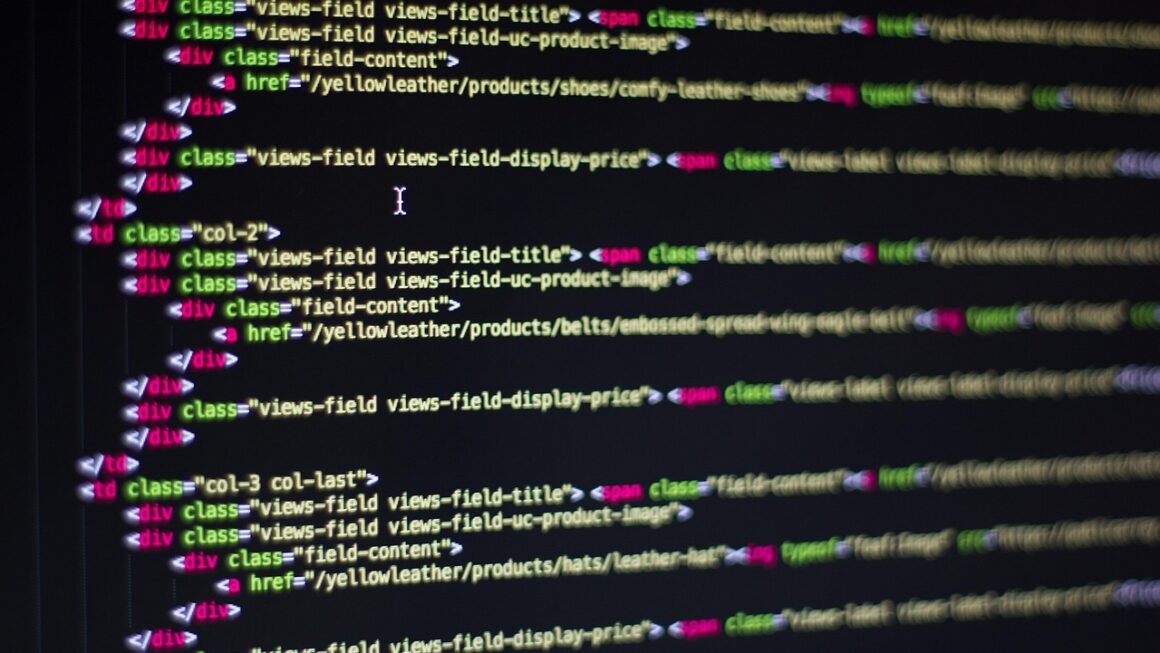Python, the versatile and widely-used programming language, is now experiencing a significant boost thanks to the integration of Artificial Intelligence (AI). From automating mundane tasks to generating complex code snippets, AI tools are revolutionizing the way Python developers work. This synergy allows for increased efficiency, reduced development time, and even the creation of more sophisticated and powerful applications. This blog post will delve into the exciting world of AI for Python coding, exploring the various tools and techniques that are transforming the landscape of software development.
AI-Powered Code Completion and Suggestions
Leveraging AI for Intelligent Autocompletion
AI-powered code completion goes beyond simple keyword suggestions. Tools like Kite, Tabnine, and GitHub Copilot utilize machine learning models trained on vast amounts of code to predict and suggest entire lines or blocks of code based on the context of what you’re currently writing. This predictive capability significantly accelerates the coding process.
- Benefits:
Reduces typing and potential errors
Offers suggestions based on context and coding style
Helps discover new functions and methods
Provides examples and documentation inline
Practical Example: GitHub Copilot in Action
GitHub Copilot, powered by OpenAI’s Codex, is a prime example of AI-driven code completion. Imagine you start writing a function in Python to calculate the factorial of a number. Copilot can intelligently suggest the entire function body, including error handling and recursive logic, based on the function signature and docstring.
“`python
def factorial(n):
“””
Calculates the factorial of a non-negative integer.
Args:
n: The non-negative integer.
Returns:
The factorial of n.
“””
if n == 0:
return 1
else:
return n factorial(n-1) # Copilot suggests this line!
“`
This level of autocompletion not only saves time but also introduces developers to best practices and alternative solutions they might not have considered.
AI-Driven Code Generation and Refactoring
Generating Code from Natural Language Descriptions
One of the most exciting applications of AI in Python coding is the ability to generate code directly from natural language descriptions. Imagine simply describing what you want a program to do, and an AI generates the corresponding Python code.
- Tools:
OpenAI Codex (Used in GitHub Copilot)
Various AI-powered code generation platforms
Refactoring and Code Optimization with AI
AI can also analyze existing code to identify areas for improvement, suggest refactoring strategies, and even automatically rewrite code to be more efficient and maintainable.
- Benefits:
Improves code readability and maintainability
Identifies potential bugs and vulnerabilities
Optimizes code for performance
Example: Converting Pandas code to Dask for scalability
AI can assist in transforming Pandas code, which is limited by single-core processing and memory constraints, to Dask, a parallel computing library, enabling it to handle larger datasets more efficiently. An AI could analyze a Pandas DataFrame manipulation script and suggest how to leverage Dask DataFrames to achieve better performance for large datasets. The AI could suggest replacing `pd.DataFrame` with `dd.from_pandas(df, npartitions=…)` and modifying subsequent operations to use Dask’s API for parallel processing.
AI for Automated Testing and Debugging
AI-Enhanced Unit Testing
AI can assist in generating unit tests automatically, covering various scenarios and edge cases. This is especially helpful for complex functions or classes where manually creating comprehensive tests can be time-consuming. AI can analyze the code’s logic and generate test cases to ensure proper functionality.
- Benefits:
Increases test coverage
Reduces the time and effort required for testing
Improves code reliability
Smart Debugging with AI
AI can analyze code and identify potential bugs or errors based on common patterns and vulnerabilities. Tools are emerging that can predict runtime errors, suggest fixes, and even automatically debug code.
- Features:
Anomaly detection in code execution
Root cause analysis of errors
Prediction of potential bugs before runtime
Example: AI-Powered Error Detection
Consider an AI trained on a large dataset of Python code and associated errors. When presented with new code, it can identify potential issues based on learned patterns. For example, the AI could identify that a variable is being used before it’s assigned, or that a division by zero error is likely based on the code’s logic. The AI could then proactively suggest fixes or highlight the problematic code region to the developer.
AI-Assisted Documentation and Learning
Automatically Generating Documentation
AI can automatically generate documentation from code comments and function signatures, creating comprehensive API documentation with minimal human effort. This is invaluable for maintaining up-to-date documentation for complex projects.
- Tools:
AI-powered documentation generators (often integrated with IDEs)
Personalized Learning and Skill Development
AI can analyze a developer’s coding style and identify areas where they could improve. It can then recommend relevant tutorials, documentation, and coding exercises to help them enhance their skills. This personalized learning experience can accelerate a developer’s growth and improve their overall proficiency.
- Benefits:
Tailored learning paths
Targeted recommendations for skill development
Adaptive learning based on individual progress
Example: AI-Driven Code Explanation
An AI tool could analyze a complex Python function and generate a plain-English explanation of what each part of the code does, the purpose of each variable, and the overall logic of the function. This is especially helpful for understanding legacy code or code written by other developers. The AI could generate a narrative description summarizing the function’s purpose, explaining each block of code, and highlighting any potential areas of concern.
Conclusion
AI is rapidly transforming the landscape of Python coding. From intelligent code completion to automated testing and documentation, AI-powered tools are empowering developers to be more productive, efficient, and creative. While AI won’t replace human programmers entirely, it will undoubtedly play an increasingly important role in the future of software development. Embracing these new technologies and learning how to effectively leverage AI will be crucial for staying ahead in the rapidly evolving world of Python programming. The key takeaway is to experiment with these tools, integrate them into your workflow, and witness the power of AI in accelerating your Python development journey.




